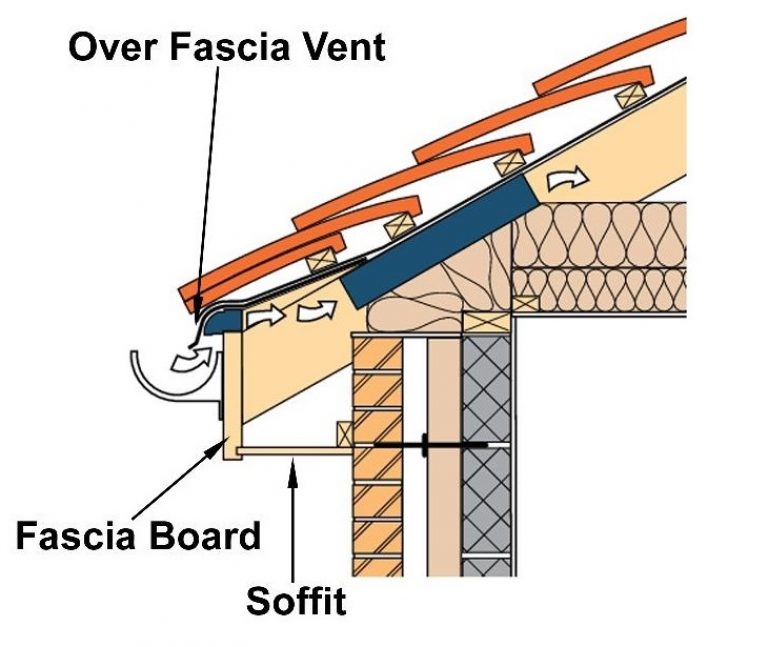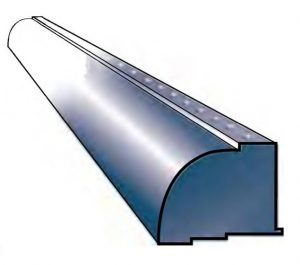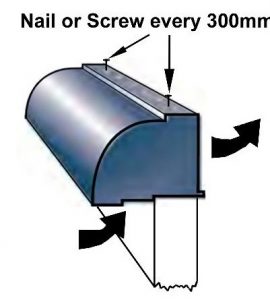What are Fascia Vents?

Proper ventilation of your roof helps to extend the lifetime of your roof and is something that should really be considered during the construction phase. However, there are a lot of different systems that you may not know which is the best for your property.
In this Wonkee Donkee Guide, we look at what are fascia vents? Answering key questions such as: when to use fascia vents? And what are the benefits of fascia vents?
What are Fascia Boards?
Before we discuss fascia vents, we need to understand what fascia boards are. If you don’t know yet, fascia boards are typically made of wood, aluminium or vinyl and are used to protect the outer structure of a roof from the elements and unwanted pests.
They also used to make properties look more appealing externally and provide a clean finish to roofs. Fascia boards have become increasingly popular for both their aesthetic appeal and their functional purposes of protecting the roofing, trusses and fixtures from the surrounding environment.
What are Fascia Vents?

Now you know what fascia boards are, you can now understand what fascia vents are and where fascia they are installed. Fascia vents are such a popular choice of roof ventilation as they are discreet and usually hidden behind guttering systems that are installed afterwards.
Fascia vents can help prolong the life of your roof, save on energy bills and prevent unwanted pests by providing effective ventilation and protection. What fascia vents do is provide a path for air to flow through the property’s roof. This airflow is important for many reasons including; preventing the build-up of condensation, improving the overall air quality in the top of the house and preventing pests from entering your roof space.
The best thing about fascia events is that they are easy to install, with over fascia vents simply clipping onto your existing fascia boarding. Although fascia boarding is manufactured in many different materials, fascia vents are normally only manufactured using polypropylene plastic.
Why choose Fascia Vents?

As we have touched on in the previous section and from the name ‘fascia vents’ by now you know that fascia vents provide ventilation to your roof. Saying this, the reason that fascia vents are so popular is that they are very discreet in their design in comparison to other options.
Fascia boarding is commonly used to create clean finishes to roofs and is easily recognizable when looking at a property. With most modern properties included fascia boards in their design, it makes sense to clip over fascia vents onto the boards in order to provide ventilation to the roof. The installation is so easy that you don’t need a professional roofer, even the worst DIY’er can successfully install over fascia vents to their property.
What is an Over Fascia Vent?
A common way to install roofing is to extend the use of fascia boards all the way to the end of the roof’s rafter. In these cases, you can install fascia vents over the fascia boards in order to provide ventilation to the roof. Installing fascia vents in this way has led to the products being referred to as over fascia vents.
How to choose an Over Fascia Vent?
Fascia vents are available to be purchased online or from any good building merchants. When looking for what fascia vents are on the market, you will soon realise that they are typically manufactured in two different sizes.
The reason for this is that each size is more suited to a different type of roof. The two sizes that fascia vents are manufactured in are 10mm and 25mm. Over fascia vents that are 10mm are designed to be installed on conventional cold roofs; whilst 25mm over fascia vents are better suited for installation on flat/shallow-pitched roofs warm roofs.
What is the best way to install Fascia Vents?

You will be surprised about how easy it is to install fascia vents on to your property. As we mentioned in the previous section, fascia vents are typically manufactured in two different sizes. Firstly, choose the fascia vent size which is more suited to your roof type and then get to work. Small clips are included in the design of the majority of fascia vents and these can simply be fastened to the top of the fascia board that covers your roofing.
A key tip from us at Wonkee Donkee is to consider nailing the board and vent down in order to provide extra stability. This is fairly straightforward to do but always practice on a spare section first in order to test how the material will react. Another important tip is to take into account the guttering system and make sure that there is enough space for its installation after you have fitted the over fascia vents.






